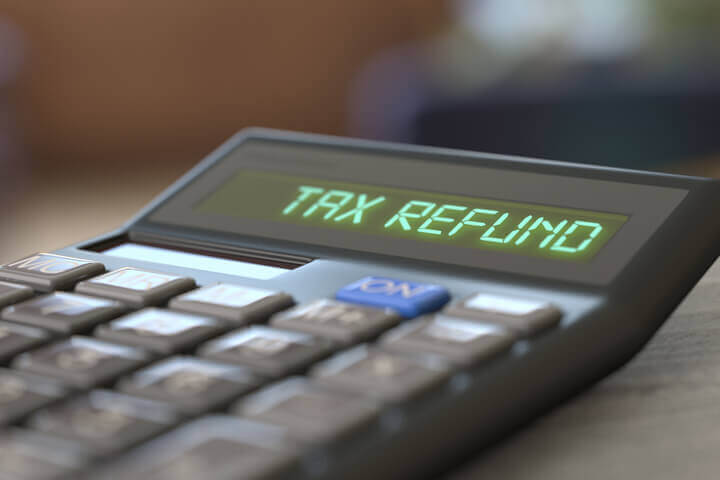10 Tips for Using Your Tax Refund Wisely as a College Student

It’s tax season, and millions of Americans will soon be receiving their tax refund checks — some bigger than others. This year, the U.S. government plans to hand out $3,071 in tax refunds on average, according to the IRS. That’s more than enough money for students to spend in a variety of different ways. Whether you’re looking for new textbooks or planning on going out with your friends this month, smart spending can go a long way on campus! Here are some tips to consider when you get your refund.
1. Rent
Rent can be a concern for many off-campus students. Not so much for on-campus since it’s part of your room-and-board expenses. Thinking about how rent works for off-campus apartments can help you see why this is a good idea.
Let’s say you’re living in a four-bedroom with three other roommates on a six-month lease. The rent is around $2,000 a month on your place. That’s $500 each times six, or $3,000. If you’re getting back the $3,071 average, then you’re basically living for free during those six months. Living year-round in the same location essentially drops your monthly rent to $250 a month year-round. Not bad at all!

2. Tuition
Tuition is the money you pay to learn at a university or college. Tuition is often a loan that you’ll have to pay back, with interest, once you graduate. Tuition increases are due to the fact that universities have to pay more to cover their fixed costs, such as their rent. But the money they receive from students is staying the same.
Tuition has to increase to cover the difference between the money they have coming in and the money they have going out. That said, you can take a nice chunk of tuition out each year by applying your tax refund directly to the principal. That can go a long way if you’re attending undergraduate school on in-state tuition. Mixing that with scholarships, grants, and low-interest loans can help to mitigate the scourge of student loan debt.
3. Books
Your books are some of your most expensive costs outside of tuition and room-and-board. It can feel like you’re getting bilked by paying full price to a campus bookstore. However, you have to consider the type of book you’re buying. College textbooks are often massive tomes built on original research and informational synthesis, placed carefully into a curriculum designed to make you an expert in your specific content area.
It’s not exactly summer reading material. That means the labor costs of creating the book are high, as are the shorter-run productions. Last but not least, the market is too limited to make the publisher’s money back at mass-market pricing. And that’s why you pay a fortune. But applying your tax refund can usually more than cover your book expenses for a semester or even a year. That’s less school-related monies that you’ll need to borrow.
4. Groceries
Careful grocery shopping can usually be done for about $150-$200 per month per person. A tax refund of $3,000 would more than cover a whole year’s worth of food. You can then use that to reevaluate the money you’re borrowing to ensure that none of it is going towards food.
In so doing, you will limit the amount of money that you have to borrow for college even further. You might not wish to drill that far down into the details and instead apply your tax refund to another aspect of your education. Just know that you might be able to have it both ways if you carefully track what you eat and compare prices against what the university is charging you for a meal plan.
5. Rainy Day Funds
It’s important to save a little bit of money every month for emergencies. If you can build up a little bit of cash in case of emergencies, then you won’t have to rely on credit card debt when something happens.
Spend about 2–3 hours per week thinking about money. Making it a daily habit to spend a little bit of time with your money will inform how you spend and save (or don’t). It will also give you a clearer picture of all the money that you have coming in.
One of the hardest things to establish as a college student is an emergency fund because you’re still adjusting to the independence of not having to live at home and answer to a parent or guardian for every decision you make. It can lead to getting a little drunk on the power of it all, so to speak.
But you need to build up a big emergency fund as soon as possible, or at least build up a little bit of cash every month. Having some money in the bank for emergencies will go a long way to staying out of debt. Using your tax refund as a starting point for an emergency fund is a good practice.
6. Shopping
College students spend about $2,000 a year on clothes, food, and cell phones. College students tend to spend less on clothes than older adults, and spend more on food and technology.
It helps to know data like this if you’re a college student because you can then use it to build a realistic budget. One word of warning, though: credit cards can change the game in a very bad way.
One of the best ways to control spending is to not bring your credit cards with you when you go shopping. It’s easy to overspend when you have a card in your hand, especially when it’s so easy to make a purchase with a swipe of a card. Don’t let the ease of payment tempt you into spending more than you have. The only real money that you possess is that which sits in your bank account.
Ignore your credit limit and your cards altogether. Instead, take your tax refund and build it into a monthly budget. A $3,000 return, for example, would give you a one-year guarantee of $250 additional per month. Two thousand dollars in spending, on the other hand, would equate to approximately $167, essentially covering you for the entire year (and then some).
7. Utilities and Bills
Pay attention to what your phone and utility bills are each month. Annualize the expenses by adding up each bill and dividing the number of months received. This should give you a clearer picture of what you’re spending (and what you need to set aside) each month for utility payments. Chances are, your tax refund will cover the entire year’s worth of expenses, especially if you live in a dorm and have your phone line on a family plan with other family members.
8. Experience Entertainment
As a college student, you can usually be lured into two forms of entertainment. The first is what we like to refer to as “experience” entertainment. This includes going out with friends, eating out, hitting the movie theaters or a concert, and just generally exploring your world as a college student.
9. Dorm Room Entertainment
The other form of entertainment that you’ll probably be spending a lot of money on is what we like to call dorm room entertainment. You probably spent a lot more on this during COVID-19 than you will in the next year-and-a-half as things open back up and the opportunity for experiences increases. Dorm room entertainment consists of physical or digital media you would consume in your dorm room or apartment. Video games, eBooks, streaming platforms, or digital purchases of some form.
10. Home Furnishings
It’s always nice to be able to have a place that feels like home when you’re not physically at your home. Using your tax refund to purchase refurbished furniture is a cheap way of bringing a homey quality to your home away from home. Consider it!
Your Tax Refund Can Help in More Ways Than You Realize
As a college student, income can be sparse and future expenses great. Any surge of income that you can use to your advantage will help your future endeavors, and the tax refund is by far the most consistent. Take time to decide the best way to use yours. Best of luck as you navigate this tax season! What will you be spending your tax refund on? Let us know what your plans are in the comments section below!
[Featured Image by Quote Inspector]








